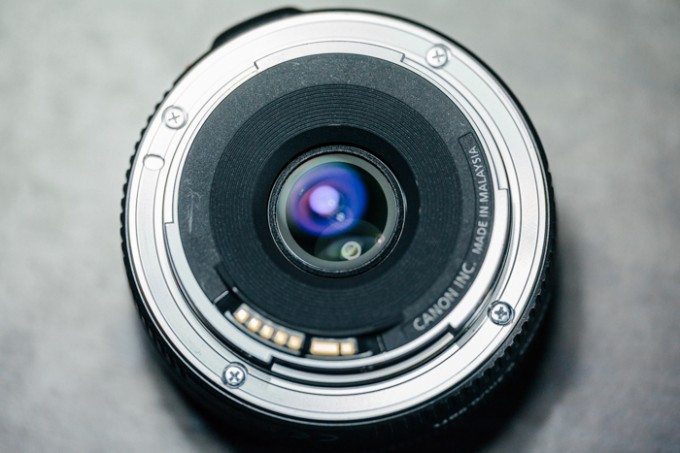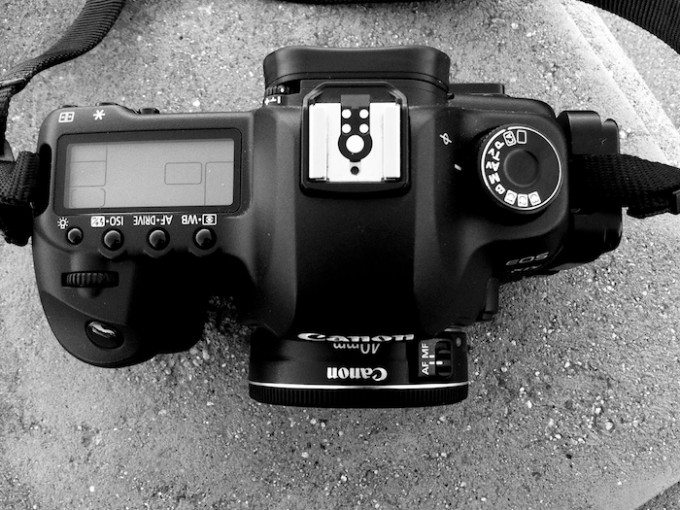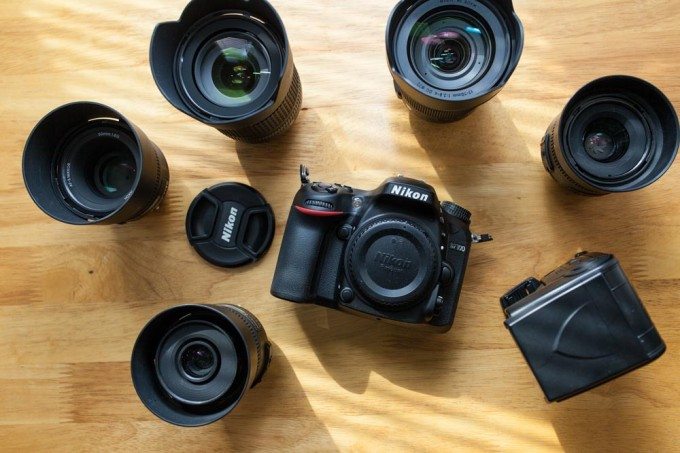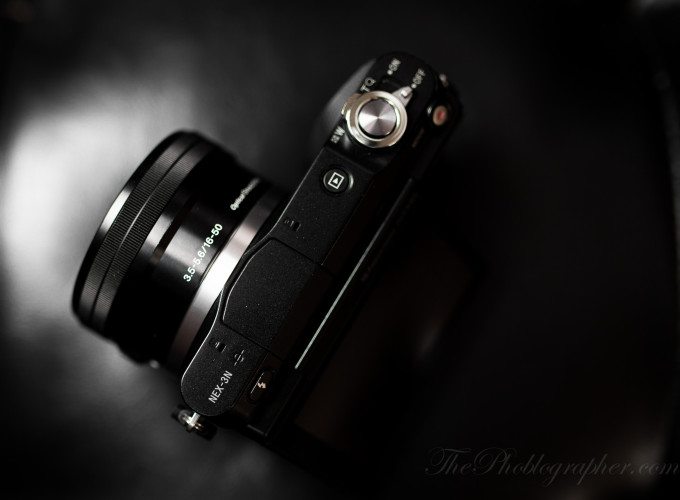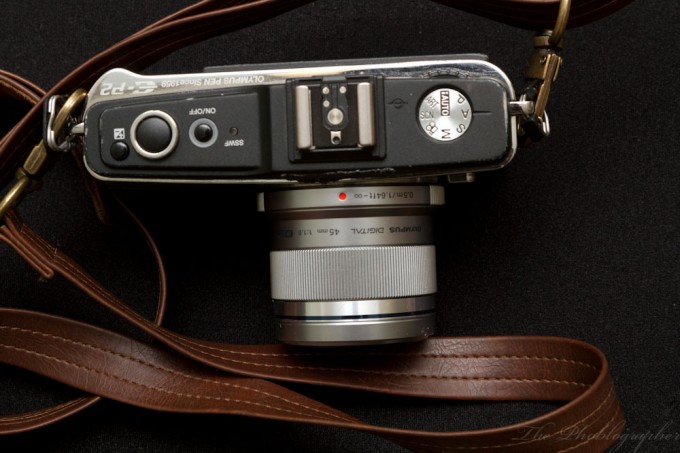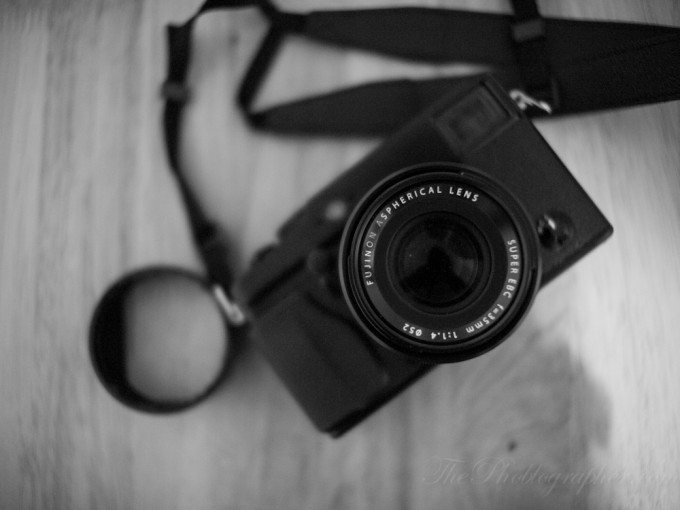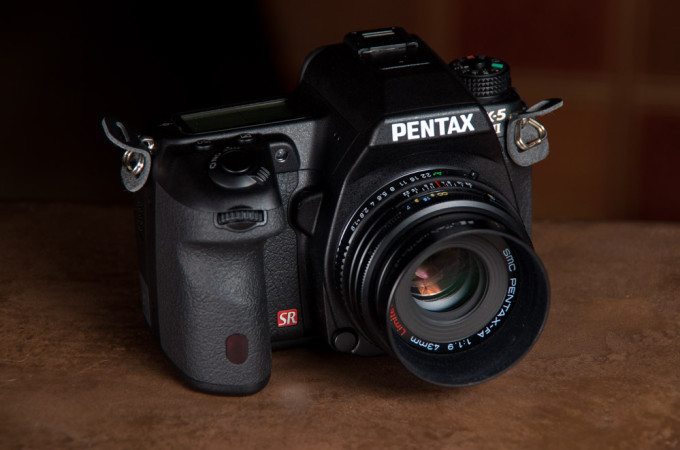10 Most Famous Portrait Photographers
Who are some of the most famous portrait photographers of all time? Well, we all know that there can’t be a definitive answer of this question. Any list prepared by us or for that matter by any other authority will have to face a lot of debate and probably some criticism as well. We would still like to go ahead and let our readers know about some of the best portrait photographer ever.
These photographers has been acclaimed by critics and loved by their viewers. They are not just famous portrait photographers but masters of portrait photography. Their work in portraiture is amazing and influencing. They have already inspired thousands of budding photographers and will continue to inspire young generation in future with their outstanding work. Below is a list featuring some of the ‘crème de la crème’ of portrait photography:
Yousuf Karsh
(December 23, 1908 – July 13, 2002)
Yousuf Karsh was arguably the most prominent portrait photographer of all time. Karsh photographed “almost everyone who needs to be photographed” and his portfolio was certainly the richest in clientele and fascination.
Karsh was born in Mardin, Ottoman Empire now a part of Turkey but moved to Quebec, Canada at the age of sixteen. Under the guidance of his uncle photographer George Nakash, Karsh developed the initial taste for photography which expanded more during his apprenticeship with John Garo in Boston.
Karsh was introduced to Canadian Prime Minister Mackenzie King who took an instant liking to him and asked him to capture the visiting dignitaries. Karsh shot to fame with an image of Winston Churchill during WWII which has set the record of being most reproduced image of all time. The notable works of Yousuf Karsh requires another article to be summed up but a few among them are the portraits of John F. Kennedy, Pablo Picasso, Albert Einstein, Ernest Hemingway, George Bernard Shaw, Pope John Paul II, Mother Teresa, Mohammed Ali, Humphrey Bogart, Martin Luther King, Queen Elizabeth II, Walt Disney, Indira Gandhi etc.
Karsh was exemplary in terms of photographing the greatest men/women of different era. In 2000, when International Who’s Who drafted a list of 100 most notable people of the century, 51 among them were photographed by Karsh one time or other.
To know more about Yousuf Karsh, read our article on this master photographer: “Yousuf Karsh : The master who captured hidden side of famous faces“
Man Ray
(August 27, 1890 – November 18, 1976)
Man Ray born as Emmanuel Radnitzky was an American Portrait and Fashion Photographer. Ray was an artist who excelled at Painting, Sculpture, Movie Direction and several other performance art forms other than photography. Ray has been considered one of the most influential artists of 20thcentury.
An avant-garde photographer, Ray was also involved in Dada and Surrealist movements and was one of the major contributors. Ray integrated several other art forms such as Painting and Drawing in his photography and developed his own unique style. Ray also reinvented solarization technique and created a type of photogram which he named ‘rayographs’, after himself.
The most famous photographs of Man Ray are Violon d’Ingresinspired by painter/musician Ingres, portraits of James Joyce, Gertrude Stein, Antonin Artaud, Pablo Picasso and a series of nude photographs of Méret Oppenheim. Ray was a visionary photographer and this gem of his sums his photography nicely, “I do not photograph nature. I photograph my visions.”
To know more about Man Ray visit his official website run by Man Ray Trust.
Diane Arbus
(March 14, 1923 – July 26, 1971)
Diane Arbus was an American photographer who revolutionized the art of photography due to her peculiar selection of subjects. Diane decided to photograph that part of society which was left untouched for a long, long time. She mostly photographed dwarfs, giants, transgender and other elements of societies which were being considered as ‘freaks’ or ‘ugly’. Diane was an artist even before she took the first camera in her hands and she painted and drew sketches since very young of age.
Diane took to photography as her preferred way of expression very late in her life but her earliest introduction to photography came when she married Alan Arbus at the age of 18. In late 50s she started to put more emphasis on her own photography and graduated to more advanced levels very soon.
Diane’s photographs were not for faint hearted even when they did not display any cruelty. Her choice of off-beat subjects were trend-setting but also drew a lot of criticism. Her photography was defining and at the times altering the collective trends of the trade but it also presented several challenges to not only viewers but her critics as well. The compassion and intrigue drew by Diane’s photography has never been achieved before or matched since.
Some of her most well-known photographs are “Child with Toy Hand Grenade in Central Park”, “Triplets in Their Bedroom”, “A Young Man in Curlers at Home on West 20th Street”, “Identical Twins, Roselle”, “A Naked Man Being a Woman” etc. Arbus was also a very prolific writer and written some of the most radical articles on photography such as “The Vertical Journey: Six Movements of a Moment Within the Heart of the City” for Esquire, “The Full Circle” for Harper’s Bazaar and “Mae West: Emotion in Motion” published in Show magazine.
To know more about Diane Arbus, read our post A Revolutionary Photographer Diane Arbus: ‘Seeing the Unseen’ on IDA.
Dorothea Lange
(May 26, 1895 – October 11, 1965)
Dorothea Lange was an American photographer best known for her documentary photography during the Great Depression in US. Lange studied photography at Columbia University, NYC under the guidance of prominent photographer Clarence H. White and later apprenticed under Arnold Genthe.
In 1919, after moving to San Francisco, Lange opened her own portrait studio. Her business was a successful one but with the onslaught of the Great Depression on American way of life, Dorothea moved her attention to the streets of her country and started to study and capture the unemployed and homeless people. Her photographs became a way of sending the pleas of those people to the authorities and she was offered an employment with federal Resettlement Administration (RA). During this time Dorothea captured her most famous image “Migrant Mother” (1936) which in itself is a complete story of those times.
After the attack of Japanese air force on Pearl Harbor, America started the forced evacuation and internment of Japanese Americans to relocation camps. Lange started to record these events for War Relocation Authority (WRA) and her compositions were the mirror of an unethical policy of detaining and charging people without any crime. Her criticism of this event through photography became a reason for Army to confiscate them before coming into light for others to see.
Dorothea was the master of capturing social issues and anarchy of system. Her photographs became the voice of repressed, helpless and subjugated people and she kept attempting to bring into mainstream of society.
Some of her most notable images were captured in the Manzanar Relocation Center which are available on the website of Still Photographs Division of National Archives and at the Bancroft Library of University of California, Berkeley.
Dorothea Lange’s inspirational work can be seen at The Museum of Modern Art.
Richard Avedon
(May 15, 1923 – October 1, 2004)
Richard Avedon was an American Portrait and Fashion photographer. The New York Times described his photographs as a reflection of American culture and beauty in his obituary.
Avedon showed his interest in photography at an early age of 12 when he joined the Young Men’s Hebrew Association (YMHA) Camera club. He started taking pictures of his surroundings using a family owned Kodak Box Brownie camera. Avedon’s first muse was his beautiful younger sister Louise.
Avedon studied photography from 1944 to 1950 at New School for Social Research with Alexey Brodovitch, the art director of Harper’s Bazaar magazine. In 1945, Avedon’s photographs first appeared in Junior Bazaar and a year later in Harper’s Bazaar. In 1946, after setting up his own studio, Avedon started offering photographs to magazines such as Vogue and Life. Avedon continued his fashion work and his assignments included Versace collections, Calvin Klein Jeans, Colgate, Revlon etc.
During 60s Avedon branched out to photograph studio portraits of politicians, civil right activists and other various groups. He covered the Civil Rights Movements in 1963 and the fall of the Berlin Wall.
Some famous photographs of Avedon are the portraits of Marella Agnelli an Italian socialite, Dovima with Elephants, Marilyn Monroe, Andy Warhole, Dwight D. Eisenhower and The Beatles. Avedon also authored and co-authored many books including Observations (1959), Nothing Personal (1964), Alice in Wonderland (co-authored with Doon Arbus, 1973), In the American West (1985) and Woman in the Mirror (2005).
Richard’s work can be viewed at RichardAvedon.com
Joe McNally
(27 July 1952 – )
Joe McNally is a New York City (USA) based photographer who has been working on numerous prestigious assignments for last 30 years. He is one of the most acclaimed photographers internationally and his work has been featured on the cover of numerous magazines including TIME, Newsweek, Fortune, New York and many more. He was the staff photographer of LIFE magazine from 1994 to 1998, the first in 23 years. He also has been a contributor to the National Geographic magazine for 20 years. He has worked on the marketing campaign for some of the biggest brands such as FedEx, Nikon, Sony, GE, Adidas etc.
His most notable work includes the “Faces of Ground Zero — Portraits of the Heroes of September 11th” which is a collection of 246 giant portraits which was shot right after 9/11. McNally has also published three books on photography: “The Moment It Clicks”, “The Hotshoe Diaries” and “Sketching Light”. McNally has won multiple international accolades for his work and has been described by American Photo magazine as “perhaps the most versatile photojournalist working today”. He also has been honored by World Press Photo, Pictures of the Year International and many magazines such as Photo District News, Graphics Inc., Communication Arts etc.
Visit Joe McNally’s portfolio and get inspired.
Steve McCurry
(February 24, 1950 – )
Steve McCurry is another premier portrait photographer widely acknowledged for his work in this field. McCurry a native of Pennsylvania (USA) has been a photographer for more than 30 years now. He has contributed frequently for National Geographic magazine and has been a member of Magnum Photos for more than 27 years. McCurry has been a frequent traveller to Indian subcontinent and has shot many famous photographs there. He has covered many armed conflicts including the Soviet invasion of Afghanistan, Iran-Iraq war, Lebanon Civil war and many more.
The most famous work of McCurry is the “Afghan Girl” which he shot in 1985 and was published on the cover of National Geographic magazine in June 1985. He has published 12 books including ‘Portraits’ (1990), The Iconic Photographs (Limited Edition; 2011), “In the Shadows of Mountains” (2007) and “South Southeast” (2000) among the notable ones. McCurry has won Robert Capa Gold Medal in 1980. He also has won several other awards including Magazine Photographer of the Year by National Press Photographers Association, Photographer of the Year awards by American Photo Magazine and PMDA and Leica Hall of Fame Award and many others. In 1984, he won four first-place prizes in the World Press Photo contest, an achievement unheard of. Due to his work with transparency films, Eastman Kodak gifted him the last film roll (Kodachrome) produced by the company to shoot. You can read lot more about Steve here : Steve McCurry – The Sigmund Freud of Photography World
To get an insight about Steve McCurry, read our features “Steve McCurry – The Sigmund Freud of Photography World“, “Steve McCurry’s India visits: Untold stories and facts” and “Bollywood Captured in Kodachrome’s Last Roll“.
Annie Leibovitz
(October 2, 1949)
With a career spanning over more than four decades Annie Leibovitz is one of the most famous names among the celebrity photographers. Born in Connecticut (USA), she started working with ‘Rolling Stone’ magazine in 1969 and worked there until 1983. She has also worked with Vanity Fair as a chief photographer and contributed regularly to Vogue. Other than her work with fashion and lifestyle magazines, she has also photographed battered women and armed conflicts in Bosnia and Rwanda.
Leibovitz has photographed the iconic band ‘The Rolling Stones’ several times during her career. Her most notable work was the cover shot of Rolling Stone featuring John Lennon and Yoko Ono. Her other notable works include a couple of nude portraitures of Demi Moore and the portrait of Queen Elizabeth II. Other than these, she also has photographed many celebrities for the covers of magazines. In 2005, American Photo named her as the single most influential photographer at work today. She won a Clio Award in 1987 for her advertising campaign for American Express charge cards. She has won multiple awards and accolades from photography fraternity and has authored several books. Women (1999), Pilgrimage, American Music (2003) and A Photographer’s Life: 1990-2005 (2006) are some of the books written by her. We’ve a detailed post on this free-spirited photography diva on IDA. Read more about Annie Leibovitz.
You can also read our articles on Annie Leibovitz; Annie Leibovitz – The Free-Spirited Photography Diva and Disney characters brought to life by Annie Leibovitz
Gregory Heisler
(1954 – )
Gregory Heisler is a New York (USA) based photographer who is renowned for his portraiture work for different magazine covers. He has shot portraits for more than 70 covers of TIME magazine. He has contributed for the covers of Life, Esquire, Sports Illustrated, The New York Times Magazine, ESPN to name a few. Other than these, he has also worked on advertising commercials for brands such as American Express, Merrill Lynch, Nike, Benson & hedges etc.
His most famous work is a controversial photograph of George H. W. Bush for the cover of TIME magazine in which he used the technique of double exposure. Other notable works of Heisler include the cover portraits for TIME of Muhammad Ali, Michael Phelps, Rudolph Guiliani and many other celebrities. In 2000, Heisler won the prestigious Alfred Eisenstadt Award for his work in Photography. Some of the other awards which he won are ASMP corporate photographer of the year (1986), Leica Medal of Excellence (1988) and World Image Award in 1991. Heisler is also a sought-after speaker, an innovative essayist and an enthusiastic educator. Gregory Heisler has co-authored a book named “Visions of Armageddon” and has published some of his selected portrait works as well.
Visit Gregory Heisler’s portfolio and get inspired.
Peter Hurley
Peter Hurley is an American Portrait photographer who is an expert of headshots. Peter was a national champion sailboat racer who was a part of US National Sailboat team for 2000, Sydney Olympics.
Peter’s first brush with photography came when he modeled for Ralph Lauren and he continued modelling for several other brands. Peter started photography during his preparation for Sydney Olympics and took upon it like a fish in the water. He excelled in his art at a very quick rate and very soon his client list was featuring brands like Levi’s, Reebok, DKNY and Johnnie Walker among others.
Since then Hurley has not looked back and has captured several great portraits. Peter’s portfolio comprises of several distinctive headshots which make him different from many other portrait photographers. Peter’s work has been exemplary in portrait photography and his genius makes him stand above the crowd. Peter seems to have a very bright future and his work marks him as a ‘legend in making.’
To know more about this talented photographer, visit his official website.
We know that famous portrait photographers list we created here is just not enough to do justice with so many talented and inspiring photographers. Therefore we promise you that this list will keep on evolving in future. Keep watching this space for updates!















